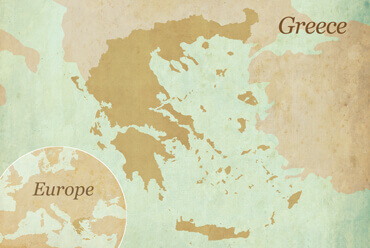Net Weight
400gGross Weight
440gWidth
5.4cmDepth
8cmHeight
19.7cm
The history of the island of Santorini has not been determined by wars, pirates, conquerors and looting, but by the island’s active volcano. Santorini was first inhabited in 3000 BC by the Phoenicians, and it was called "Strongyli" - due to its round shape. In 1450 BC, a violent volcanic eruption completely destroyed the island of Santorini, and this beautiful Cycladic Island remained uninhabited until the 12th century, when the Lacedaemonians arrived to the island, and a new culture began to flourish. After that, we have the Byzantine era, the island's occupation by the Venetians in 1204, and the renaming of Santorini after the name of the church of Agia Irini (Saint Irene). In 1579, Santorini was annexed by the Ottoman Empire and it prospered in shipping and commercial activity. In 1830 it became part of the New Greek state, while in 1956, another, very powerful earthquake, shook the island and caused massive destruction.
The fascinating landscape of Santorini bears witness to the history of the island - the Caldera volcanic landscape, black sandy beaches, deeply embossed rocks, cliffs and archaeological sites. What one shouldn’t neglect to mention, are the so-called, ‘captains houses’, the traditional houses built in caves, and the much admired cycladic architecture, the vineyards and last but not least, the beautifully terraced gardens.
Santorini is an island that is interwoven with Greek cuisine art. It couldn’t have been otherwise: The catastrophic volcanic eruption on the island in the second millennium BC proved a blessing in disguise. Devastating as it may have been, it left behind volcanic ash soil which proved a bonanza for winegrowing and vegetable farming. In combination with the island’s meager rainfall, gusts of winds, and soaring morning temperatures, that soil has made Santorini the proud producer of flavorful vegetables that are unique to the island and grapes that yield superb, aromatic wines. The island’s top product is Santorini fava, a legume that gives a delicious, split-pea purée. In Santorini, fava has excelled itself to the point that it is now a PDO product while the island’s extraordinary cherry tomatoes are proudly waiting in line for their own PDO label. Other special Santorini products are capers and caper leaves. Taking creative advantage of the island’s outstanding products, local restaurants in Santorini have turned the island into a culinary wonderland looked upon as a model by the rest of the Greek regions.














